
The task of the project is to transform a 1958 old factory building in Beijing into a headquarters office and a cultural exchange space for Lens. The 60-year-old building is not old, but has its character. The triangular wooden truss has the construction features that make full use of the mechanical properties of the material (the compression bars are wood and the tension members are steel cables), reflecting the simple aesthetics of industrial buildings. And the sense of the times in the 1950s.
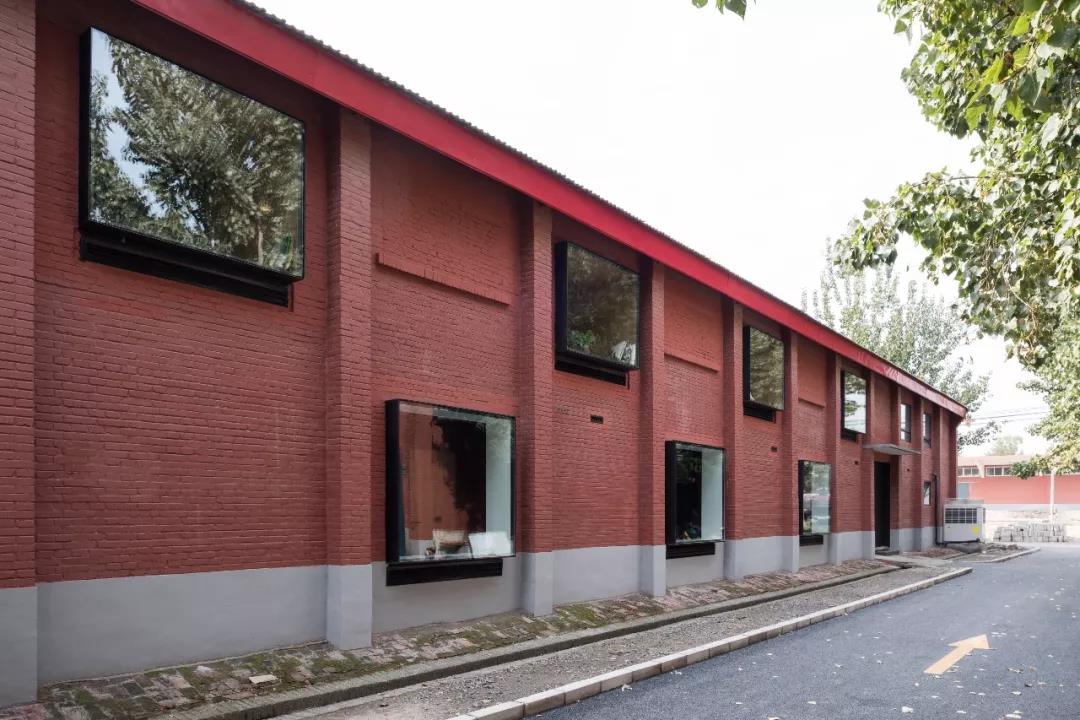
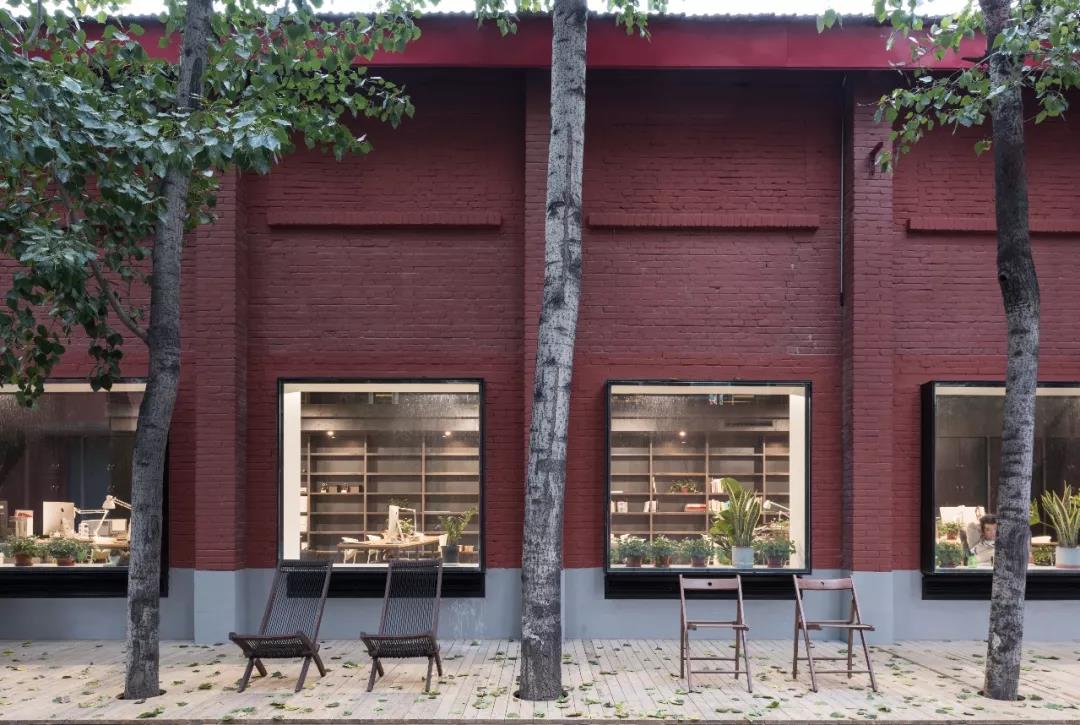
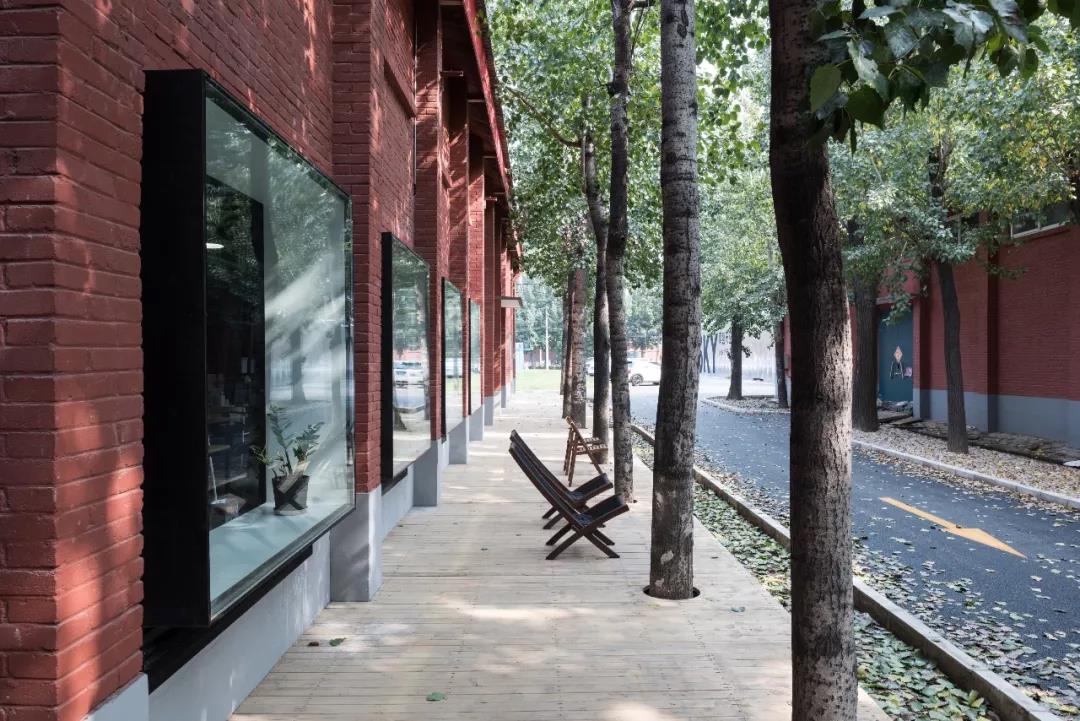
The transformation project is the processing time, and the new and old juxtaposition shows the tension of time - embodied in the spatial scale and material level. In space, the original large space is cut to create spaces of different scales. As the roof of the important elements in the original large-scale space, the perceived way is changed from panoramic to fragmented, resulting in roof and people. The sense of distance.
In terms of materials, the new part uses steel plates. The accuracy of the steel plates serves the abstraction of the geometric shapes, while the mottled rust of the rust forms a dialogue with the old buildings on the material level.
The spatial organization mainly deals with the relationship between public (external) and private (inside). The library on the central axis is an extension of the public area to the private area. It becomes an invitation and hopes to realize internal and external interaction. The result of spatial division is the formation of independent spaces that become spaces in space. Each space presents different characteristics due to differences in scale, proportion and light.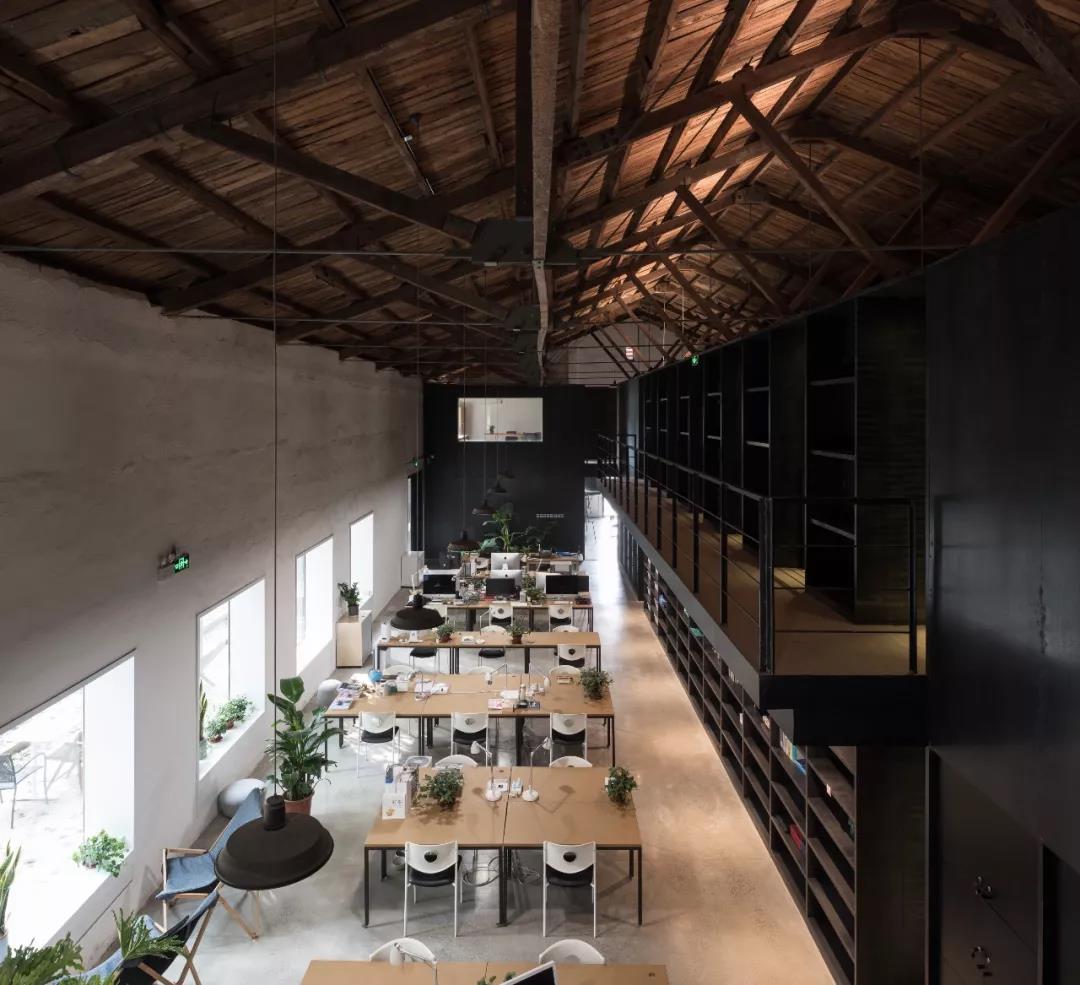
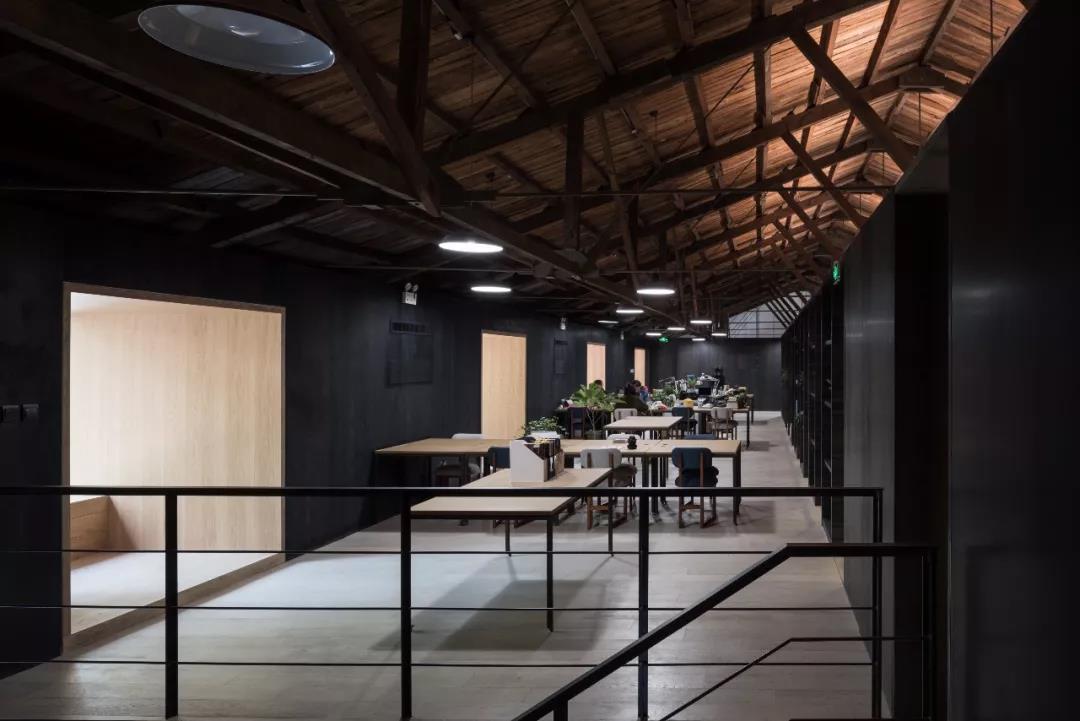
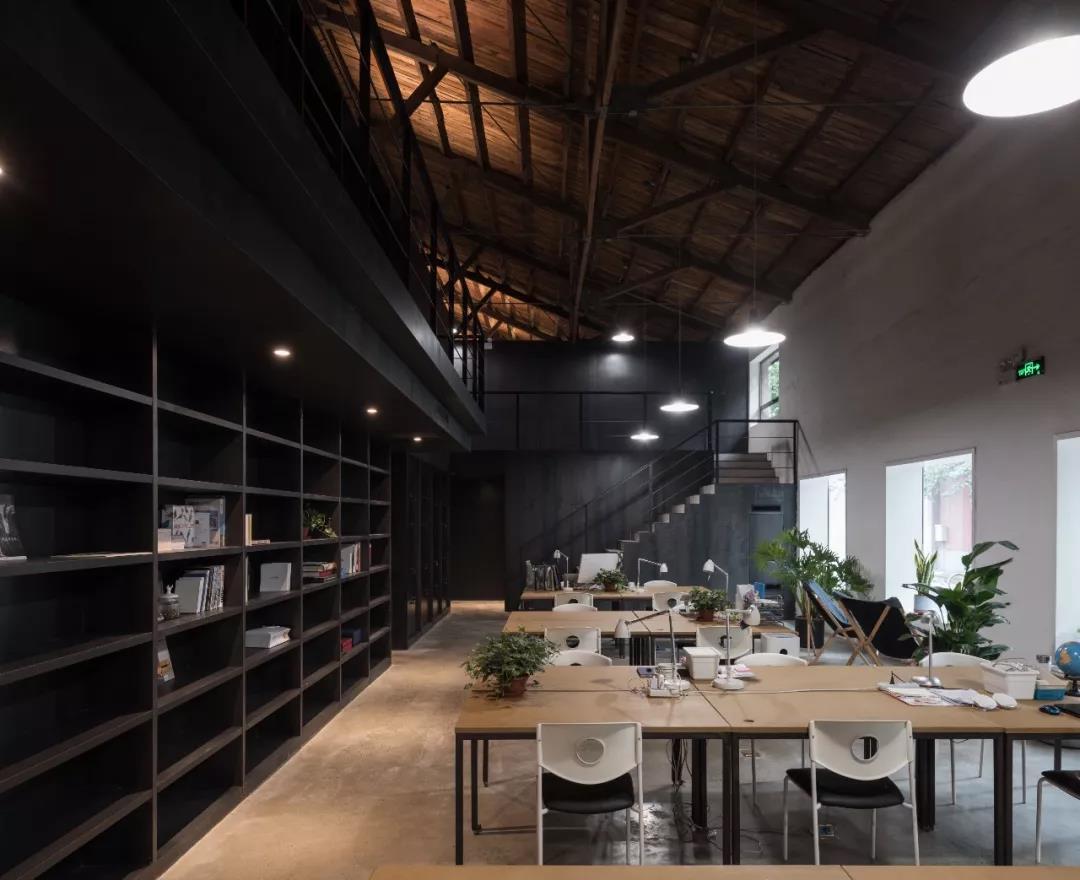
Workspace
The central library is towering upwards, connecting the heavens and the earth, showing verticality and rising sense, shaping the hall of the spiritual book; the office areas on both sides respond to their respective environmental characteristics with different spatial scales and atmosphere. The southward space is open and sunny, creating an atmosphere of encouragement and ease of work. The northward space is divided into two layers, the ground floor is the conference area, and the upper floor is the office area. Its scale is intimate with the light, intimate and wrapped space.
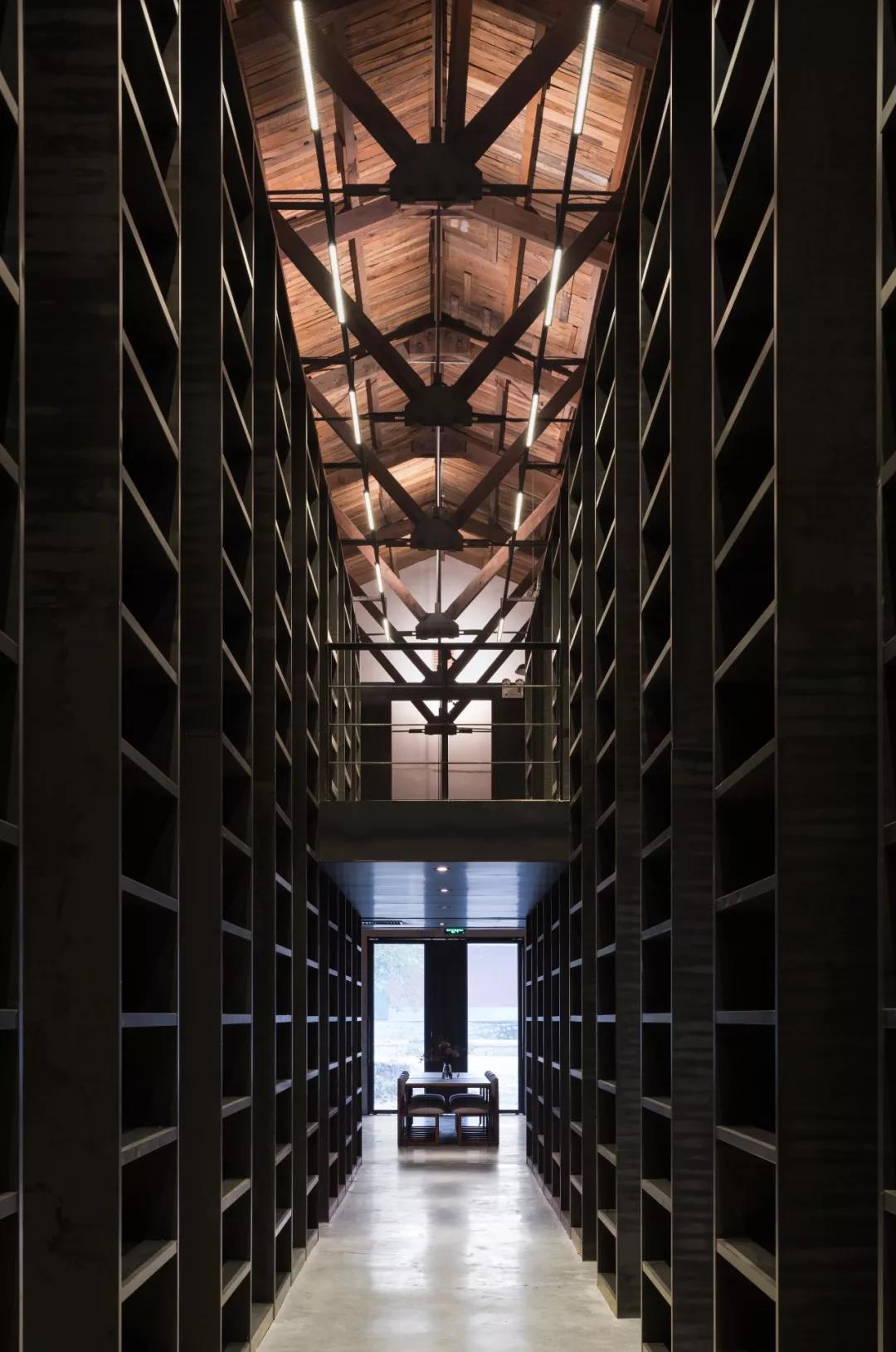
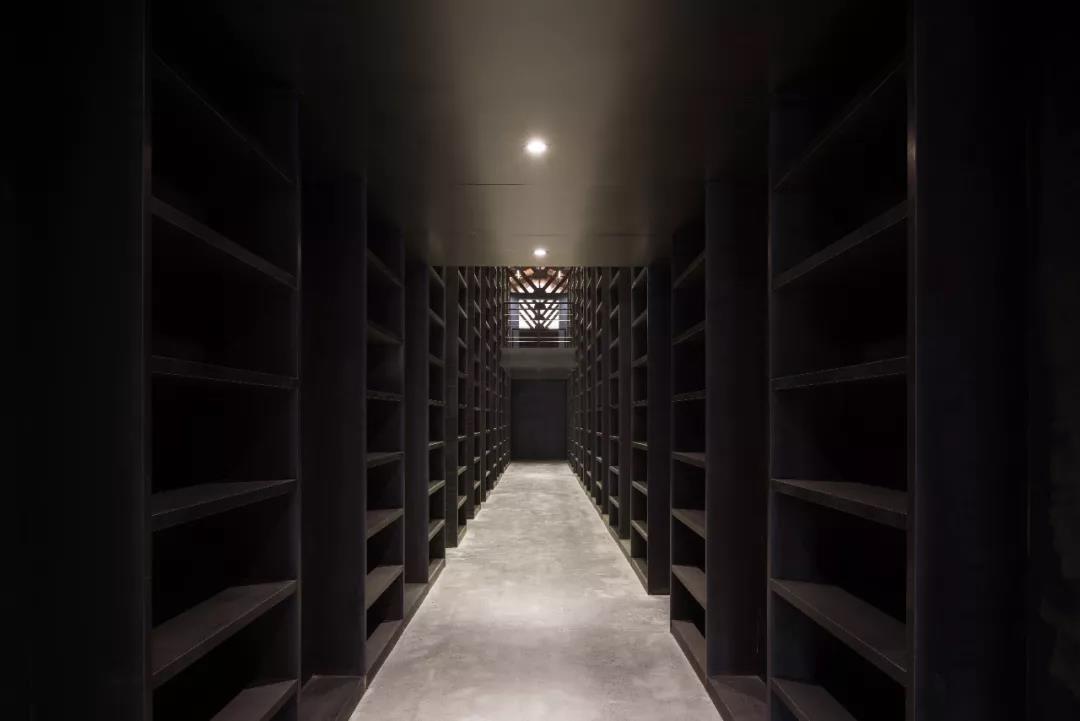
Book gallery
The window holes on the wall form a dim chamber because of its depth, and become a private space where individuals or two or three people can be alone. The exhibition hall is square, all directions are homogeneous, the revolving door is horizontal when it is opened, the flowing exhibition hall is vertical when closed, the closed lecture hall, meeting place, and the roof are prominent; the exhibition hall is square, and its dual characteristics are opened and closed by the revolving door. achieve.
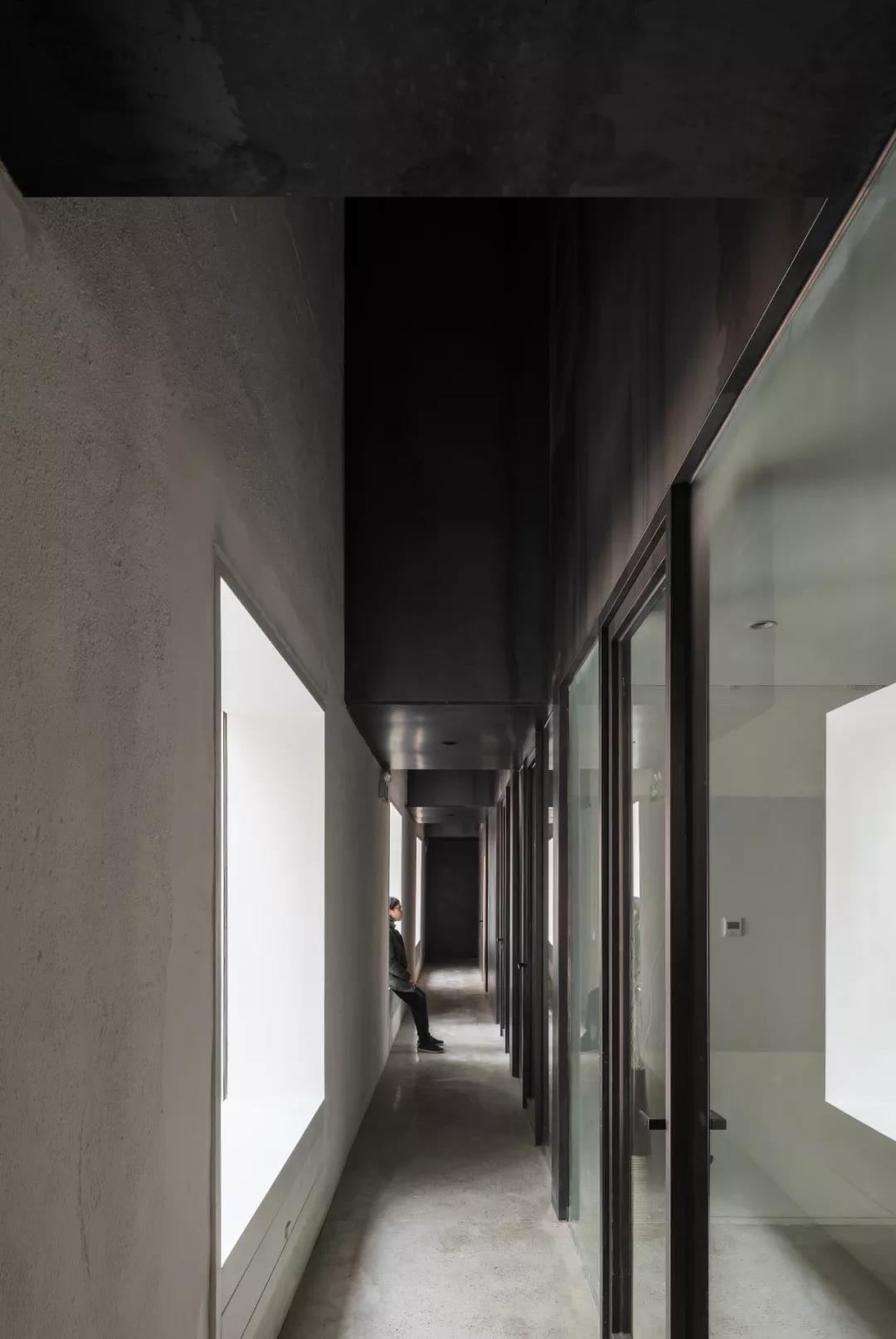
corridor
When the revolving door is opened, the exhibition hall has fluidity and the space is horizontal. When the revolving door is closed, the roof is once again pulled into the line of sight, the space is vertical, and the old and new relationships are perceived in the longitudinal space. At this time, the closed space also has the function of lecture hall and venue.
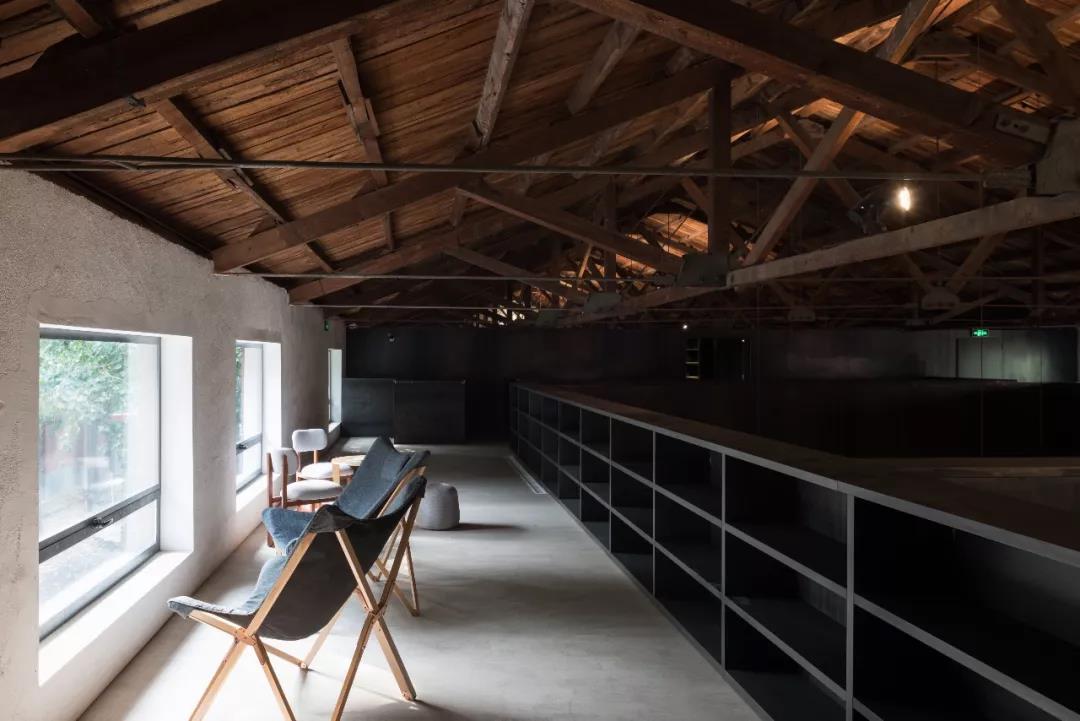
The renovation of the facade opening is based on the local traits of each local space. The original high window in the southward space is sealed, and the natural light enters from the newly opened window below. Light is concentrated only on the range of people's activities, making the roof dark and far-reaching. The window is designed to achieve a state in which the visual and functional uses are separated. The hole becomes a pure frame to enhance the original sense of space. The combination of scale, proportion, light and materials has completed the transformation of this historical industrial space into a contemporary cultural place.
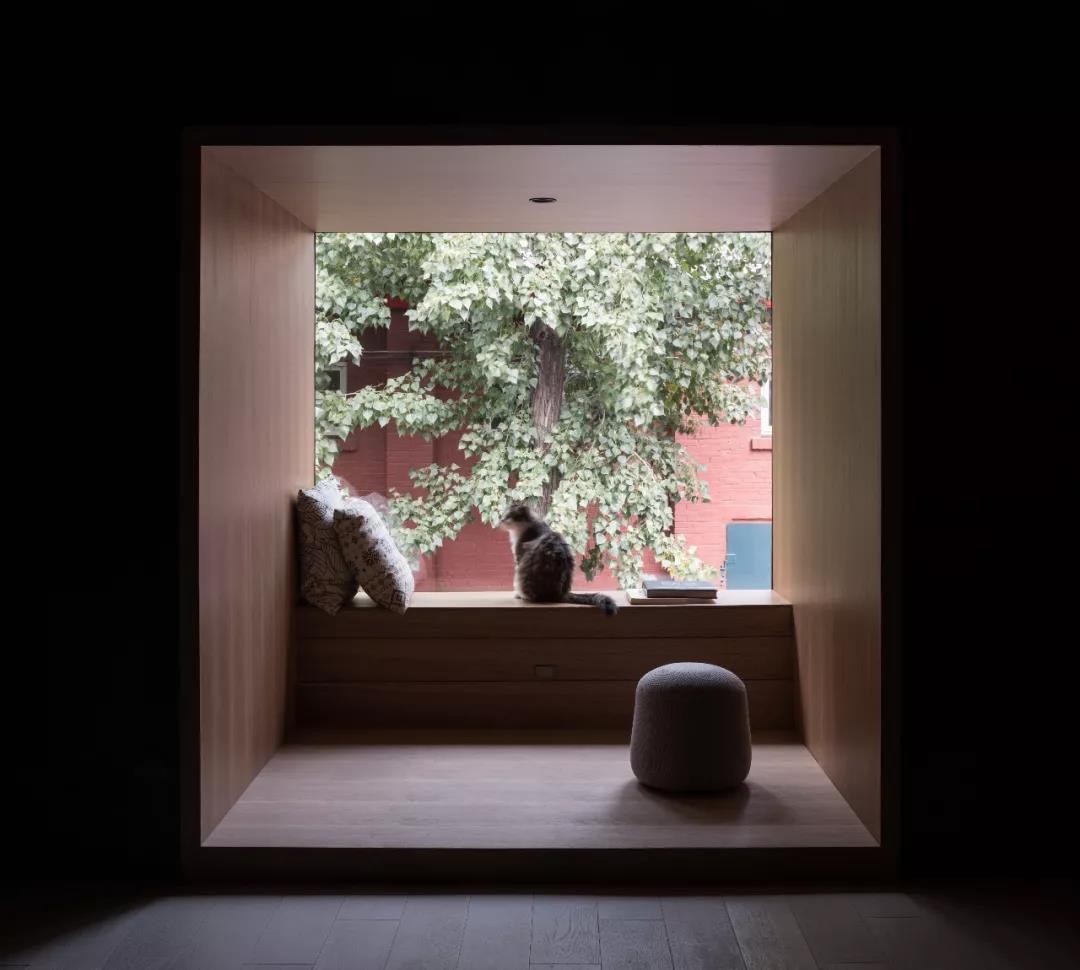
Led Pocket Mirror, bag mirror with lights, portable vanity mirror , pocket makeup mirror factory in China
Zhongshan Seven Cool Electronics Technology Co.,Ltd , https://www.gdsevencool.com